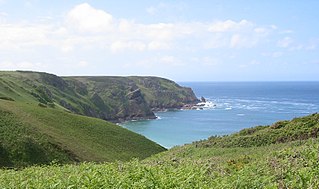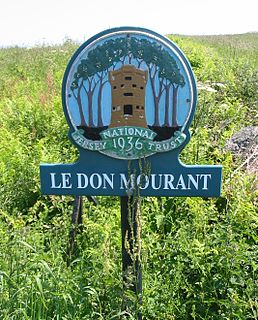
The National Trust for Jersey is a charitable organisation which aims at preserving and safeguarding sites of historic, aesthetic and natural interest in Jersey.
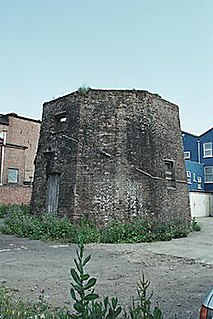
Great Mill or Ride's Mill is a Grade II listed smock mill just off the High Street in Sheerness, Kent, England, that was demolished in 1924, and now has a new smock tower built on it as residential accommodation.

Ringle Crouch Green Mill is a smock mill in Sandhurst, Kent, England, that was demolished to base level in 1945, and now has a new smock tower built on it as residential accommodation and an electricity generator.
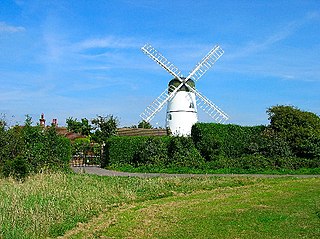
Waterhall Mill, also known as Westdene Windmill, is a grade II listed tower mill at Westdene, Sussex, England which has been converted to residential use.

Stone Cross Windmill is a grade II* listed tower mill at Stone Cross, Sussex, England which has been restored and is open to the public. The mill was also known as Blackness Mill and the White Mill.

Pratt's Mill is a tower mill at Crowborough, Sussex, England which has been truncated and converted to residential accommodation.

Walter's Mill is a tower mill at Mark Cross, Sussex, England which has been converted to residential accommodation.

Wray Common Mill is a grade II* listed tower mill at Reigate, Surrey, England which has been converted to residential use.
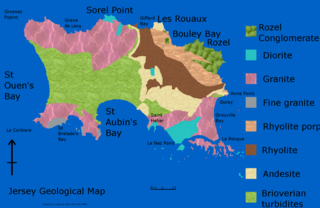
The geology of Jersey is characterised by the Late Proterozoic Brioverian volcanics, the Cadomian Orogeny, and only small signs of later deposits from the Cambrian and Quaternary periods. The kind of rocks go from conglomerate to shale, volcanic, intrusive and plutonic igneous rocks of many compositions, and metamorphic rocks as well, thus including most major types.
Frimley Green Windmill is a Grade II listed tower mill at Frimley Green, Surrey, England, which has been converted to residential use.

Hohlgangsanlage are a number of tunnels constructed in Jersey by occupying German forces during the occupation of Jersey. The Germans intended these bunkers to protect troops and equipment from aerial bombing and to act as fortifications in their own right.

Flixton Road Mill is a tower mill at Bungay, Suffolk, England which has been truncated and converted to residential accommodation. The structure is a Grade II listed building.

Corton Mill is a Grade II listed tower mill at Corton, Suffolk, England which has been converted to residential accommodation.

Skoulding's Mill is a Grade II listed tower mill at Kelsale, Suffolk, England which has been converted to residential accommodation.

Lound Mill is a tower mill at Lound, Suffolk, England which has been converted to residential accommodation.
Croxley Green Windmill is a Grade II listed tower mill at Croxley Green, Hertfordshire, England which has been converted to residential accommodation.

Great Ellingham Windmill is a Grade II listed tower mill in Great Ellingham, Norfolk, England which has been converted to residential accommodation.
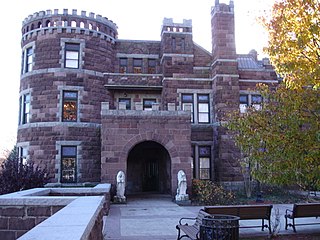
Lambert Castle, originally called Belle Vista, is located within the Garret Mountain Reservation in Paterson, Passaic County, New Jersey, United States. The building was built in 1892 and was added to the National Register of Historic Places on June 3, 1976.

Rozel is a place name describing two identically named vingtaines in the Channel Island of Jersey- the Vingtaine de Rozel of St Martin and the Vingtaine de Rozel of Trinity.




